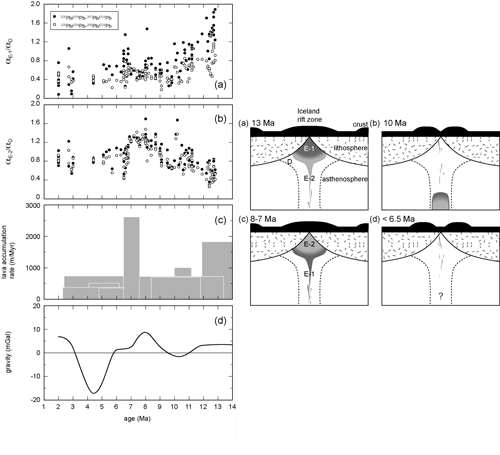Multiple magmatic episodes on Iceland caused by pulses of mantle plume
Some hotspots (e.g., Hawaii, Iceland) have been active for millions to tens of millions of years and are thought to be the surface manifestation of partial melting in a mantle plume. To understand the evolution of hotspot magmatisms it is necessary to determine how the compositions and productivity of magmatism vary with time. In this study, temporal geochemical variation in the Tertiary Icelandic magmatism is elaborated based on comprehensive analytical dataset. We revealed temporal changes in composition of magma sources and identified three distinct end-member components in this magmatism: one is the upper mantle peridotite and the other two are crustal lithologies. We also found the correlation between contribution from each end-member component and rate of magma production: higher magma productivity is coincident in time with larger contribution from recycled-crustal lithologies. The crustal lithologies have melting points lower than that of peridotite and should result in higher melt productivity at a given temperature in the melting region than melting of source dominated by peridotite. We therefore conclude that correspondence between productivity and the compositions of the Tertiary Icelandic lavas could be due to the periodic entrainment of recycled crustal lithologies into the pulses of Iceland mantle plume at its source region.

References:
- Hiroshi Kitagawa, Katsura Kobayashi, Akio Makishima, Eizo Nakamura. Multiple Pulses of the Mantle Plume: Evidence from Tertiary Icelandic Lavas, Journal of Petrology, 49(7), 1365-1396 (2008). doi:10.1093/petrology/egn029, dream/20081202172326.